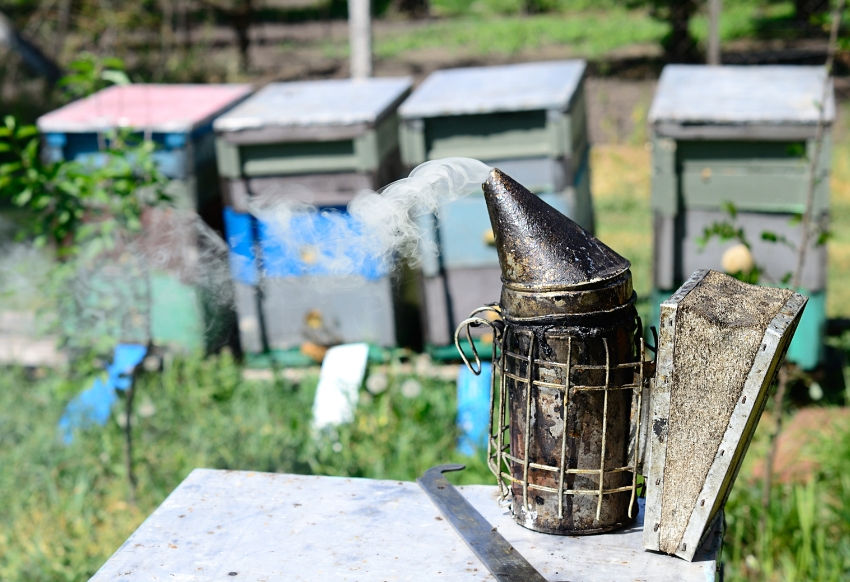How To Split A Beehive
- Laurence Edwards

- Dec 24, 2023
- 3 min read

Beekeeping is a brilliant hobby but it requires careful hive management to ensure the health and productivity of your bee colony. One essential skill every beekeeper should master is the art of splitting a beehive. Splitting a hive not only helps prevent swarming but also promotes colony growth and overall hive health. In this guide, we'll walk you through the process of splitting a beehive step by step.

Step 1: Understanding the Need to Split
Before diving into the splitting process, it's crucial to recognise the signs that your hive may need splitting. Common indicators include overcrowding, the presence of queen cells, or a general sense of restlessness among the bees. If left unaddressed, these signs can lead to swarming, which can result in the loss of half your colony. In my personal view, if you leave it until you see swarm cells it's too late and you are in emergency splitting mode. A pre-emptive vertical or horizontal split made before the signs of swarming are apparent is always best.

Step 2: Timing is Everything
Spring is the ideal time to split a beehive. During this season, the colony is more active, and the weather is conducive to the establishment of new colonies. Aim to split your hive when the population is at its peak, usually before the main nectar flow begins or just as the spring flow is coming to an end. Bees make honey. If you lose half your bees in a swarm, you can say goodbye to a bumper honey crop.

Step 3: Gather Your Equipment
Before starting the splitting process, ensure you have all the necessary equipment. You'll need additional hive boxes, frames, a new queen if necessary BUY HERE, a hive tool, and protective gear, including a bee suit and gloves. It's best to plan for this during the winter. If you wait until your bees are overcrowded it's too much of a race against time. Plan to split each colony at least once per season.

Step 4: Choose a Splitting Method
There are several methods for splitting a beehive, but the two most common are the walk-away split and the artificial swarm split. The walk-away split involves creating two separate colonies by moving frames with queen cells, eggs, and brood to a new hive. You can even do the walk away split without queen cells and the bees will produce emergency cells to create their new queen.
The artificial swarm split mimics the natural swarming process, with one portion of the colony containing the original queen and the other portion rearing a new queen. The artificial swarm is generally performed after swarm cells are made.
My favourite method of making a split is a vertical split method called a Demaree. This is my favourite as it requires the least amount of equipment, can be performed before swarm cells are created and doesn't impact on the honey crop. This is the method I will show you below.
I always think watching is easier than reading. Take a look how its done here.
Step 5: Execute the Split (Demaree)
Get a new brood box full of frames with new foundation. Find the queen and cage her on a frame with as much capped brood as possible. Remove ALL other frames of bees and brood to the new brood box and place to one side. Build the colony back up like this. Place the floor in the same position as its always been. Add the brood box with the queen on a frame of brood. Add in the frames of wax foundation into the bottom brood box (uncage queen at this point). Place queen excluder over the brood box. Add supers back on. At least 2 supers is required for this to work. They should be full of bees and honey. Don't do this with empty supers. Add next brood box on top of supers. This will contain all original brood frames and bees minus the one frame you removed with the queen on it. Replace this frame with a frame of wax foundation. Add crownboard and roof.
After 10 days return and go through every frame in the TOP brood box. Shake bees off and remove ALL queen cells. Don't miss ANY. The manipulation is complete.

Step 6: Monitor and Care for the New Colonies
After the split, closely monitor both hives for the next few weeks. Ensure the newly formed colonies have ample food and observe their behaviour. You shouldnt have to feed the colonies if they had supers full of honey.
You can repeat this manipulation two or three times throughout the season. Its a brilliant technique and one that I use on all of my colonies every single year.

Conclusion:
Successfully splitting a beehive is a valuable skill for any beekeeper. By understanding the signs that a split is necessary, timing the process correctly, and providing the new colonies with the care they need, you can foster a healthy and thriving beekeeping environment. Happy beekeeping!














Comments